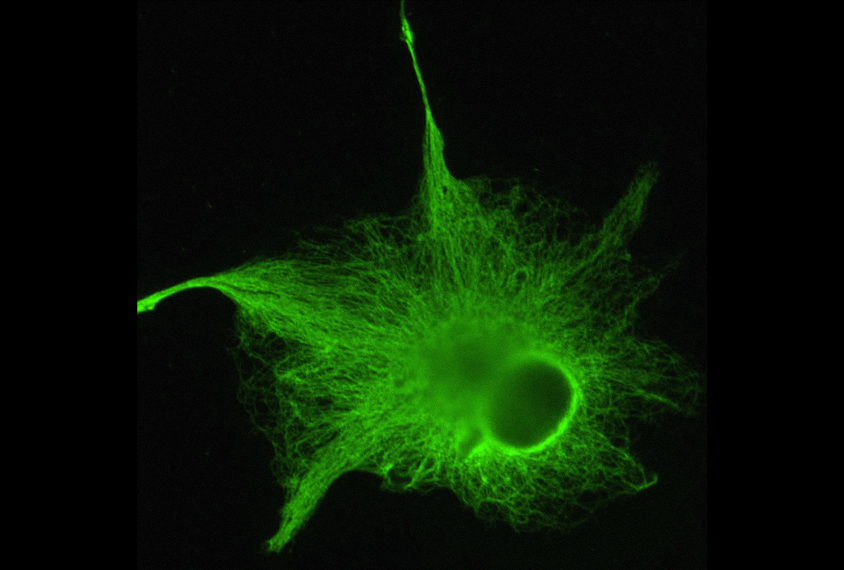
Riccardo Cassiani-Ingoni / Science Source
THIS ARTICLE IS MORE THAN FIVE YEARS OLD
This article is more than five years old. Autism research — and science in general — is constantly evolving, so older articles may contain information or theories that have been reevaluated since their original publication date.
A new study casts brain cells called astrocytes as minor stars in Rett syndrome, a developmental disorder that almost exclusively affects girls. Loss of MeCP2 — the gene involved in Rett syndrome — affects the expression of more than a thousand genes in astrocytes, researchers reported today at the 2015 Society for Neuroscience annual meeting in Chicago.
Rett syndrome leads to symptoms ranging from breathing difficulties to scoliosis. But its most significant effects are on the brain: Girls with the syndrome have learning and memory deficits, for example. Accordingly, snipping out the MeCP2 gene from only neurons recapitulates most of the features of the syndrome in mice.
Studies suggest that the gene also plays a key role in other brain cells, including astrocytes, which provide physical and functional support for neurons. Restoring MeCP2 expression solely to astrocytes alleviates motor deficits, anxiety and breathing difficulties and extends lifespan in mice1.
“A lot of the focus in Rett syndrome is neurons, neurons, neurons. They’re really important, nobody disputes that, but nobody is really looking at what astrocytes do to neurons,” says Natasha Pacheco, a graduate student in Michelle Olsen’s lab at the University of Alabama at Birmingham, who presented the findings.
MeCP2 is a multipurpose protein that modulates the expression levels of thousands of other genes. It is not clear what its precise role is in astrocytes, but the protein peaks in the brains of mice during their first three weeks of life, which is also when astrocytes mature.
A 2012 study showed that astrocytes lacking MeCP2 fail to develop their characteristic complex branching shape2. Whether lack of MeCP2 prevents astrocytes from maturing in the first place, or from maintaining this mature shape, is not clear, says Pacheco.
Novel targets:
To answer this question, Pacheco and her colleagues used antibodies to proteins on astrocytes’ surface to extract the cells from the brains of male mice, some of which lacked MeCP2. The mice were 60 days old, an age at which Rett-related symptoms are at their peak. The researchers then sequenced the cells’ RNA, the molecular message that codes for protein.
The researchers found 1,037 genes with altered expression in astrocytes from the brain’s outer shell, or cerebral cortex, in mice lacking MeCP2. Of this total, 780 genes are expressed at higher levels, and 257 at lower levels, compared with controls.
Isolating astrocytes was important for seeing these changes, Pacheco says. When the researchers sequenced a whole piece of the mouse cortex instead, they found only 414 genes with altered expression. Gene expression changes among multiple cell types may cancel each other out, masking genes that show significant changes in astrocytes, says Pacheco. “If we don’t look at individual cell populations, we could be missing many interesting and novel gene targets,” she says.
The specific genes affected in astrocytes point to important pathways, such as cellular development and cellular growth, that may go awry during development. To probe this further, the researchers have collected samples from mice lacking MeCP2 and controls at 7, 14 and 28 days after birth.
“This will be one of the first studies of its kind to shed some light on specific astrocytic genes and pathways not only in disease, but during normal healthy development,” says Pacheco.
It may also be helpful to compare the new results with those from other neurological disorders that show effects on astrocyte genes, says Huda Zoghbi, professor of pediatrics and neurology at Baylor College of Medicine in Houston, Texas, who chaired the session.
For more reports from the 2015 Society for Neuroscience annual meeting, please click here.
By joining the discussion, you agree to our privacy policy.